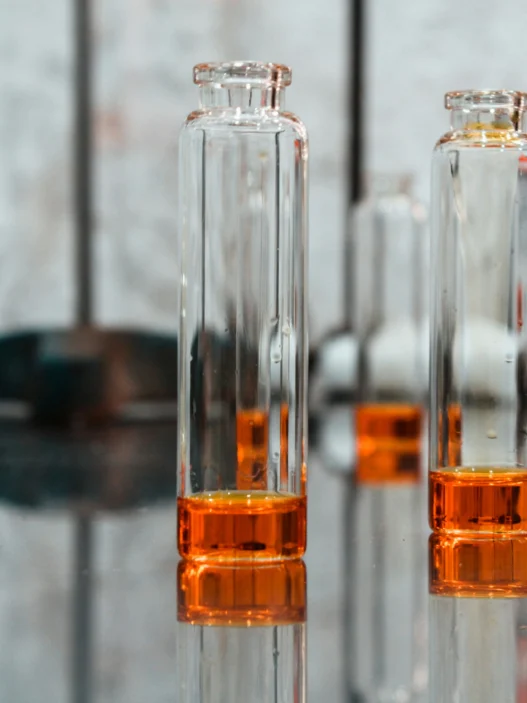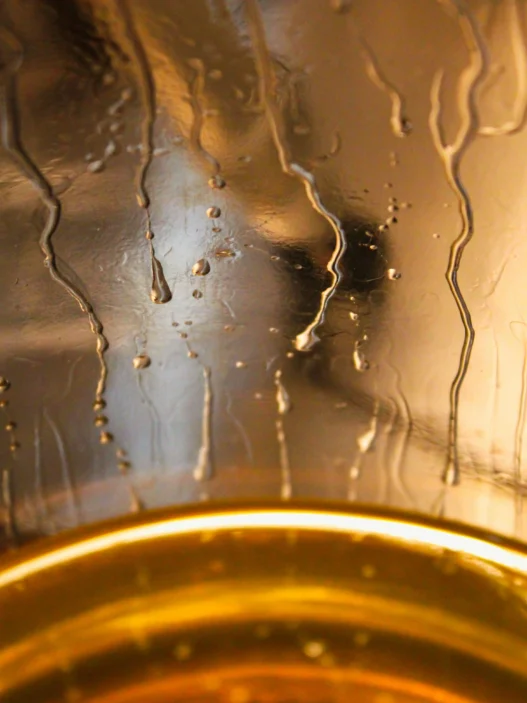Perillyl alcohol is a naturally occurring compound found in certain fruits, such as cherries and oranges, as well as in various herbs and plants. While not widely known among the general population, Perillyl alcohol has shown potential in various scientific studies for its anti-cancer properties. Research suggests that this compound may have the ability to inhibit the growth of cancer cells and induce cell death. As such, further exploration of Perillyl alcohol’s potential therapeutic applications may ultimately have significant implications for individuals affected by cancer and their families.
Table of Contents:
- 💡 Commercial Applications
- ⚗️ Chemical & Physical Properties
- 🏭 Production & Procurement
- ⚠️ Safety Considerations
- 🔬 Potential Research Directions
- 🧪 Related Compounds
💡 Commercial Applications
Perillyl alcohol, a naturally occurring monoterpene, has found utility in several commercial and industrial applications. Due to its pleasant citrus aroma, perillyl alcohol is often used as a fragrance ingredient in various personal care products such as perfumes, colognes, and lotions. Additionally, perillyl alcohol has been utilized as a flavoring agent in the food industry, particularly in the production of citrus-flavored products like beverages, candies, and baked goods.
In the realm of drug and medication applications, perillyl alcohol has garnered attention for its potential anticancer properties. Studies have shown that perillyl alcohol exhibits anti-tumor activity by inhibiting the growth of cancer cells in various types of cancer, including breast, colon, and pancreatic cancer. Furthermore, perillyl alcohol has been investigated for its ability to induce apoptosis, or programmed cell death, in cancer cells, making it a promising candidate for cancer therapy development.
⚗️ Chemical & Physical Properties
Perillyl alcohol is a colorless liquid with a pleasant lavender-like odor. It is commonly used as a flavoring agent in food and beverages due to its aromatic properties.
With a molar mass of 152.24 g/mol and a density of approximately 0.95 g/cm³, perillyl alcohol is lighter and less dense than common household items such as water (molar mass of 18.02 g/mol, density of 1 g/cm³) and ethanol (molar mass of 46.07 g/mol, density of 0.789 g/cm³).
Perillyl alcohol has a melting point of -43°C and a boiling point of 210°C, which are lower than those of common household items like water (melting point of 0°C, boiling point of 100°C) and table salt (melting point of 801°C, boiling point of 1,413°C).
Perillyl alcohol is sparingly soluble in water and has a low viscosity, making it easily mixed with other liquids. This stands in contrast to substances like sugar (highly soluble in water) and honey (high viscosity), which behave differently when dissolved or mixed in water.
🏭 Production & Procurement
Perillyl alcohol is primarily produced through the steam distillation of citrus fruit peels, such as orange, lemon, and lime. The process involves extracting the essential oils containing Perillyl alcohol from the peels and then distilling them to isolate the compound. This method of production yields a pure form of Perillyl alcohol suitable for various applications.
Perillyl alcohol can be procured from specialty chemical suppliers that produce and distribute the compound for industrial and research purposes. The chemical can be purchased in liquid or powder form, depending on the intended use. It is typically packaged and shipped in sealed containers to ensure its stability and purity during transportation.
In order to transport Perillyl alcohol safely, proper labeling and packaging are essential to comply with regulatory requirements. The compound is classified as a hazardous material due to its flammable and toxic properties, necessitating adherence to specific guidelines for handling and shipping. Specialized carriers may be utilized to transport Perillyl alcohol to ensure compliance with safety regulations.
⚠️ Safety Considerations
Safety considerations for Perillyl alcohol include its potential to cause irritation to the skin, eyes, and respiratory tract upon direct contact or inhalation. It is important to handle Perillyl alcohol with care and use appropriate personal protective equipment, such as gloves and safety goggles, when working with this compound. In addition, proper ventilation should be maintained in areas where Perillyl alcohol is stored or used to prevent the build-up of vapors, which can pose a respiratory hazard.
Perillyl alcohol, a naturally occurring monocyclic monoterpene, is known to exhibit anti-cancer properties through mechanisms such as inducing apoptosis, inhibiting cell proliferation, and suppressing angiogenesis. Its pharmacological effects are attributed to its ability to modulate various signaling pathways involved in cancer development and progression. Studies have shown that Perillyl alcohol can inhibit the growth of various cancer cell lines, making it a potential candidate for cancer treatment and prevention.
Hazard statements for Perillyl alcohol include its potential to cause skin and eye irritation, as well as respiratory irritation upon inhalation. Prolonged or repeated exposure to Perillyl alcohol may lead to more severe health effects, such as dermatitis or respiratory sensitization. It is important to follow proper safety protocols when handling Perillyl alcohol, such as avoiding direct contact with the skin or eyes, and ensuring adequate ventilation to minimize exposure to vapors.
Precautionary statements for Perillyl alcohol include the recommendation to wear appropriate personal protective equipment, such as gloves and safety goggles, when handling this compound. In case of skin contact, it is important to wash the affected area with soap and water. If Perillyl alcohol is ingested or inhaled, seek medical attention immediately. Additionally, store Perillyl alcohol in a cool, dry place away from direct sunlight and sources of heat to prevent degradation and ensure its stability.
🔬 Potential Research Directions
Research on perillyl alcohol, a natural monoterpene compound found in various essential oils, has shown promising potential in the field of cancer therapy. Studies have demonstrated its ability to inhibit the growth of tumor cells and induce apoptosis, making it a subject of interest for further investigation in cancer treatment.
Furthermore, perillyl alcohol has been found to possess anti-inflammatory and antioxidant properties, suggesting potential applications in the treatment of inflammatory diseases. Research exploring its effects on oxidative stress and inflammatory pathways could provide valuable insights into its therapeutic use in conditions such as arthritis and cardiovascular diseases.
Moreover, there is a growing interest in exploring the neuroprotective effects of perillyl alcohol. Preclinical studies have suggested its potential in protecting against neurodegenerative diseases such as Alzheimer’s and Parkinson’s. Further research into its mechanisms of action and clinical trials are needed to validate its efficacy in neuroprotection.
🧪 Related Compounds
One similar compound to Perillyl alcohol based upon molecular structure is Limonene. Limonene is a cyclic monoterpene with the molecular formula C10H16. It has a similar carbon backbone structure to Perillyl alcohol, with both compounds containing ten carbon atoms.
Another compound closely related to Perillyl alcohol is Carveol. Carveol is a terpene alcohol with the molecular formula C10H16O. It shares the same molecular formula with Perillyl alcohol, but differs in the arrangement of functional groups on the carbon backbone.
Additionally, Menthol is a compound that bears some structural similarity to Perillyl alcohol. Menthol is a cyclic terpene alcohol with the molecular formula C10H20O. Like Perillyl alcohol, Menthol contains ten carbon atoms in its structure, but with additional hydrogen atoms and a different arrangement of functional groups.





